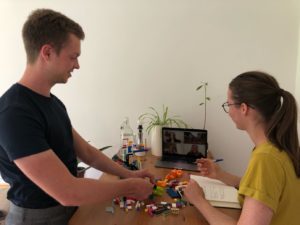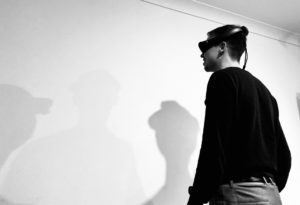
Patients are the better innovators
Who would be the best person to tackle the challenges of patients? Exactly, patients themselves. No one knows more about a patient’s problem than those who themselves suffer from the disease and its associated problems in the diagnosis, therapy or prevention. Having understood this ‘advantage’, the European Union has recently funded a training program that specifically supported innovative projects founded by patients: the EIT Patient Innovation Bootcamp.

That people suffer from a disease is terrible. But innovators are opportunists. Suffering from an illness or having friends or relatives who do fuels the passion of patient innovators such as Nicola and myself.
Patient innovators design holistically
Most of us have been patients at some point or still are. And maybe you too have felt that products or services in the healthcare sector have been imposed on you, no matter what you thought of them? So, we blame providers that they have no idea what we patients need.
There is more to it than your personal experience. Former Harvard Business School professor and innovation researcher Clayton M. Christensen observed that if a design is too superficially applied to user behaviour, adoption does not take place and the innovation fails. Market research and dictating product attributes are not enough. At best, this satisfies functional “jobs” for functional needs. Patient innovators go deeper. They understand the social and emotional components of the problems they have experienced and can therefore develop solutions that can be integrated into patients’ everyday life. Instead of creating new barriers to acceptance, patient innovators can concentrate on the essentials early on: Creating benefit.
Patient innovators test early, frequently and rigorously
In healthcare innovation, companies and developers usually have to invest a lot of effort to gain access to patients and overcome regulatory hurdles. Patient innovators can usually test solutions directly on themselves and use their social network to improve their solutions with experts (such as practitioners) or other patients. Our desire as patients drives us to keep looking for solutions. If it does not work, we will try something else. The motivation to reduce our suffering or the suffering of our child, partner, relative or friend could not be greater.
Solutions from patient innovators provide clearly defined competitive advantages
To innovate a solution, develop a product, improve a service is a huge effort and represents a major hurdle. If someone voluntarily tackles this hurdle, the need for improvement is accordingly high. Often, patient innovators are well versed in the solutions available and are constantly looking for alternatives to reduce their suffering. Only when all the alternatives have failed do patients need to create their invention to solve the problem satisfactorily. An invention that is significantly better (or cheaper) than anything available to patients and that justifies the demanding innovation process.
How often do patients become inventors? And why do we rarely hear about them?
Prof. Pedro Oliveira and his team from Patient Innovation, a non-profit platform that connects patients and carers, have asked themselves precisely these questions and conducted extensive patient surveys. The result? More than one in three patients is not satisfied with available offers and is actively creating their own solutions! The reason why we hear so little about these solutions is that only a few patients share their concepts. Very few of them have the aspiration or the necessary prerequisites to transform a private invention into a widely-available product.
How many inventions by patients are useful?
Anyone can be a patient innovator. Backgrounds of patient innovators are as diverse as people can be. The Patient Innovation platform already lists more than 2,400 inventions by patients. Granted, not every innovation might be valuable for every patient. But even brilliant full-time inventors like Thomas Edison or Nikola Tesla have invented things that were not adopted. The inventions of patients have been examined more closely by experts, with an astonishing result: about 8% of the inventions are novel, useful, highly innovative and would, according to those experts, generate real added value to society.
Something has to change
Every third patient is seeking solutions for their health problems. Many patient inventions are highly innovative and useful. But few concepts reach many patients. This means that patient innovators are not the better inventors but that many patient innovators together have the potential to make a difference.
Let us change something
Happyr Health was founded by patients as well. Cornelius Palm suffered from chronic abdominal pain for over five years as a child, Nicola Filzmoser has suffered from migraines for over 17 years. We are looking for the patient innovators, inventors, designers and doers out there to create solutions for all, to innovate migraine solutions together.
Feel free to contact us at [email protected] and let’s get active.




